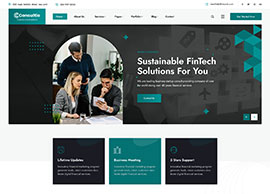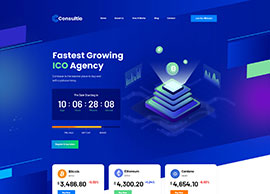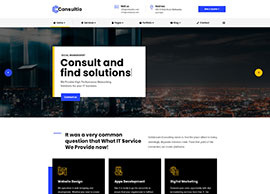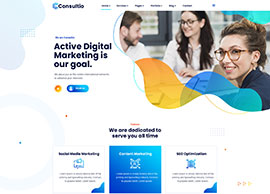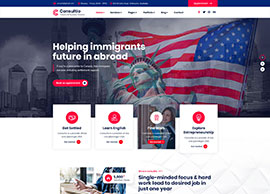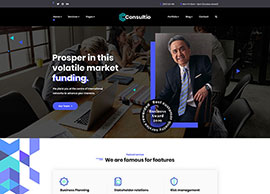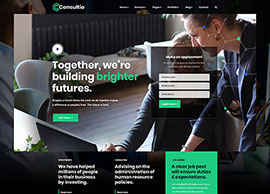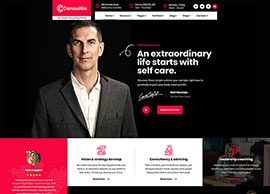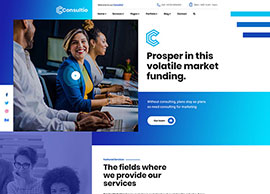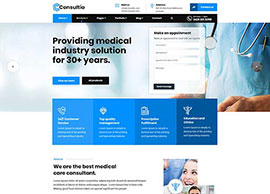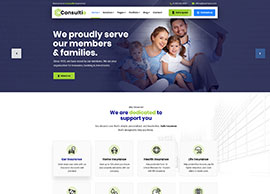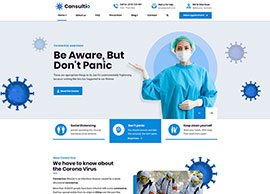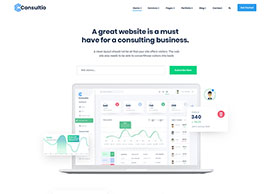
Are you planning to study in the USA? Explore everything you need to know about pursuing higher education in the United States — from top universities and courses to fees, scholarships, admission procedures, and visa guidance. Get expert advice from SIEC on choosing the best universities in the USA, finding the right program, understanding the cost of education, and learning about student visa processes and post-study work opportunities (PSWR).
The United States remains one of the most sought-after study destinations worldwide, and Indian students are increasingly choosing it for its high academic standards and global recognition. Choosing to study in the USA means gaining access to a cutting-edge education system, innovative learning methods, a diverse and inclusive culture, and numerous career pathways. Education in the USA is a transformative journey that builds skills, broadens horizons, and opens doors to global success.
The true appeal of studying in the USA lies not just in its scenic beauty but in its rich cultural diversity — a melting pot of languages, traditions, and perspectives that offers an enriching academic and life experience.
Education System
he education system in the USA is designed to provide a wide array of academic programs across various fields, catering to students aiming to study in the USA. Education typically begins at the age of 6. The American education structure is categorized into four main levels:
| Education | Level | Age | Class or grade | Duration |
|---|---|---|---|---|
| Primary | Elementary school | 6-11 | 1-4 | 5 |
| Middle | Middle or junior high | 11-14 | 6-8 | 3 |
| Secondary | High school or senior high school | 14-18 | 9=12 | 4 |
| Tertiary | Higher education | 18 onwards | University | 4 |
Universities and Colleges
No matter what subject you’re interested in, the USA offers it all. American universities and colleges are globally renowned for their innovation, comprehensive program options—from liberal arts to advanced research in STEM—and a commitment to academic excellence and opportunity.
Benefits of studying in the USA
- The United States is home to over 4,000 accredited universities and colleges, attracting students from across the world.
- The U.S. higher education system promotes critical thinking, creativity, leadership development, and a global outlook.
- Students have access to a wide variety of degree programs, including associate, bachelor’s, master’s, and doctoral levels.
- Campuses offer a vibrant community life with clubs, sports, student organizations, and cultural events.
- Institutions emphasize research, innovation, and hands-on learning, giving students real-world exposure.
| S.no | Institution | QS Ranking 2023 (Globally) |
|---|---|---|
| 1 | Massachusetts Institute of Technology (MIT) | 1 |
| 2 | Stanford University | 3 |
| 3 | Harvard University | 5 |
| 4 | California Institute of Technology (CalTech) | 6 |
| 5 | University of Chicago | 10 |
| 6 | University of Pennsylvania | 13 |
| 7 | Yale University | 18 |
| 8 | Columbia University | 22 |
| 9 | Princeton University | 16 |
| 10 | Cornell University | 20 |
Types of Institutions in the USA
The USA is home to a wide range of educational institutions that provide world-class education across different fields and levels. These institutions can be broadly classified into the following categories:
- State Colleges and Universities
These are publicly funded institutions managed by individual U.S. states. Every state operates at least one public university system, often named after the state itself. These universities offer a broad spectrum of programs at more affordable tuition rates for in-state residents. Some well-known state universities include:
2. State Colleges and Universities
Privately managed and funded, these institutions often have higher tuition fees compared to public universities. Many are known for their academic excellence and smaller class sizes. Some private universities may be affiliated with religious organizations, though they usually welcome students from all backgrounds.
Ivy League Universities
This prestigious group comprises eight elite private universities known for their academic excellence and historical significance. Although the Ivy League began as an athletic conference, it now represents academic distinction. Member universities include:
3. Community Colleges
Also called junior colleges, these institutions offer two-year associate degrees and are known for their affordability. Many students use community colleges as a pathway to transfer into four-year universities. These colleges focus on career training and foundational education. Popular community colleges include:
4. Institutes of Technology
These specialized institutions focus on engineering, technology, and applied sciences. They offer intensive, research-driven programs and practical training through labs and internships. Students graduate with strong technical expertise and industry exposure. Notable examples include:
Courses and Duration
These specialized institutions focus on engineering, technology, and applied sciences. They offer intensive, research-driven programs and practical training through labs and internships. Students graduate with strong technical expertise and industry exposure. Notable examples include:
Most In-demand Courses in the USA
| Top Courses | Duration |
|---|---|
| Computer Science | 4 years |
| MS in Data Analytics | 1-2 years |
| Engineering (Civil Engineering) | 3-4 years |
| Business Management | 4 years |
| Medicine | 4-7 years |
| Masters Of Science In Finance | 2 years |
| Environmental Science | 4 years |
| Hospitality & Tourism | 4 years |
| Creative Arts | 4 years |
| Bachelor In Psychology | 4 years |
Undergraduate courses and duration
| Qualification | Duration | Description |
|---|---|---|
| Master's degree (Professional) | 1 to 3 years | Master of Library Science (MLS, MLIS, MSLS) Master of Public Administration (MPA) |
| Master's degree (Academic) | 2 years | The Master of Research (MRes) Degree The Master of Philosophy (MPhil) Degree |
| Doctorate or PhD | 5 to 8 years | PhD is awarded on completion of a dissertation |
Postgraduate courses and duration
| Qualification | Duration | Description |
|---|---|---|
| Associate degree | 2 years | A.A. degree (Associate of Arts degree), A.S. degree (Associate of Science degree), and A.A.S. degree (Associate of Applied Science degree) |
| Bachelor's degree | 3 - 4 years | B.A. degrees (Bachelor of Arts degrees), B.S. degrees (Bachelor of Science degrees), and Bachelor of Fine Arts (BFA degree) |
Part-time and Online Programs
| Top Courses | Duration |
|---|---|
| Computer Science | 4 years |
| MS in Data Analytics | 1-2 years |
| Engineering (Civil Engineering) | 3-4 years |
| Business Management | 4 years |
| Medicine | 4-7 years |
| Masters Of Science In Finance | 2 years |
| Environmental Science | 4 years |
| Hospitality & Tourism | 4 years |
| Creative Arts | 4 years |
| Bachelor In Psychology | 4 years |
Intakes
In the USA, university admissions are structured around specific intake periods during which institutions accept applications for new enrollments. Typically, there are two major intakes each academic year:
Requirements
Each university sets its eligibility standards to allow student to study in USA, outlining specific requirements and deadlines for application submissions. Here is a glimpse of eligibility requirements for different programs to study in USA.
Eligibility Guide for Bachelors program
- Completed 12 years of formal education in a relevant field
- Minimum GPA of 3.0
- TOEFL: 80-100
- IELTS: 6.5 overall, with no band below 6.0
Eligibility Guide for Master’s program
| Category Type | Eligibility Requirements |
|---|---|
| Undergraduate Degree |
|
| English Language Proficiency |
|
| GMAT/ GRE Scorecards |
|
| SAT | Test Optional but highly recommended for Scholarships |
| Statement of Purpose | Yes |
| Letter of Recommendation | Yes |
| Resume | Yes |
| Work Experience Certificate |
|
| Proof of Funds |
|
| Passport and Student Visa | Passport must have a validity of minimum of 6 months after the completion date of the course in the USA |
| Study Visa | F-1 Visa |
Cost and Expenses
Whether you’re planning to pursue a bachelor’s or master’s degree, one of the most important aspects to consider early on is the overall cost. Studying abroad requires smart financial planning to ensure you’re well-prepared before arriving in the USA. This means doing thorough research, setting a budget, and managing expenses wisely—striking the right balance between not overspending and not falling short.
Average Accommodation Costs
| Type of Accommodation | Indicative monthly cost (Rent) |
|---|---|
| Hostel, on-campus | $2,450 for a public university and $2,775 for a private University |
| Dorms, off-campus | $450, if the room is shared by four students |
| Outskirts, off-campus | $600 for 1BHK in a rural area, and $3,000 for 1 BHK in an urban area like Boston |
| Rent (1-bedroom apartment in the city centre) | $1,500 to $3,000 per month |
| Rent (1-bedroom apartment outside the city centre) | $1,000 to $2,000 per month |
Monthly Cost of Living of States in the USA
| State | Cost index ($) | Grocery ($) | Housing ($) | Utilities ($) | UTransportation ($) |
|---|---|---|---|---|---|
| District of Columbia | 112.7 | 257.4 | 108 | 110 | |
| Mississippi | 83.3 | 92.2 | 66.3 | 90.4 | 86.7 |
| Kansas | 86.5 | 91.7 | 72.6 | 100.2 | 97.3 |
| Alabama | 87.9 | 98.2 | 70.1 | 100.7 | 92.7 |
| Oklahoma | 87.9 | 94.5 | 74.7 | 95.1 | 94.8 |
| Georgia | 88.8 | 95.9 | 74.4 | 90.5 | 92.6 |
| Tennessee | 89 | 94.7 | 79.3 | 92.5 | 88.8 |
| Missouri | 89.8 | 95 | 80.3 | 95.4 | 92.4 |
| Lowa-lowa | 89.9 | 98.4 | 76 | 94.9 | 97.7 |
| West Virginia | 90.5 | 96.5 | 78.6 | 89.4 | 92.2 |
| Indiana | 90.6 | 92.7 | 78.3 | 99 | 98.3 |
| Arkansas | 90.9 | 93.1 | 79.1 | 92.3 | 92.3 |
| New Mexico | 91 | 95.5 | 84.3 | 89.6 | 98.1 |
| Michigan | 91.3 | 90.1 | 80.7 | 99.7 | 103.2 |
| Ohio | 91.3 | 99.2 | 76.5 | 92 | 98.6 |
| Texas | 92.1 | 90.8 | 83.8 | 103.2 | 94.1 |
| Louisiana | 93 | 96.8 | 86 | 87 | 96.5 |
| Kentucky | 93.1 | 92.1 | 79.9 | 104.7 | 103 |
| South Carolina | 93.6 | 99.5 | 79.6 | 105.2 | 95.2 |
| Nebraska | 93.7 | 98.6 | 86.6 | 89.3 | 100.2 |
| Illinois | 94.3 | 98.4 | 86.6 | 96.5 | 105.8 |
| Wyoming | 94.3 | 102.7 | 81.3 | 85.2 | 99.9 |
| North Carolina | 95.7 | 97.6 | 88.6 | 97.7 | 92.8 |
| Wisconsin | 96.4 | 99.5 | 88.4 | 99.4 | 99.5 |
| North Dakota | 98.2 | 101 | 95.4 | 95.2 | 104.2 |
| Utah | 99 | 97.3 | 98.4 | 90.9 | 109.9 |
| Minnesota | 100 | 103.9 | 90.2 | 96.5 | 99.4 |
| Florida | 100.3 | 105.6 | 99 | 105.3 | 98.8 |
| Montana | 100.7 | 103.4 | 106.3 | 88 | 94.7 |
| South Dakota | 101 | 102.1 | 112.8 | 91.8 | 89.7 |
| Virginia | 101.8 | 95.2 | 111.5 | 96.7 | 90.4 |
| Idaho | 102.1 | 93.8 | 110.4 | 82.3 | 111.7 |
| Pennsylvania | 102.5 | 107.8 | 98 | 109.7 | 105.6 |
| Arizona | 103.2 | 101.5 | 107.7 | 104.8 | 98.8 |
| Colorado | 105.3 | 98.1 | 116.4 | 88.4 | 105.6 |
| Nevada | 106.3 | 107 | 117.9 | 88.4 | 119.7 |
| Delaware | 107.9 | 114 | 103.1 | 96.5 | 113 |
| New Hampshire | 109.9 | 103.6 | 108.1 | 113.6 | 97.2 |
| Washington | 111.6 | 108.4 | 119 | 90.8 | 117.4 |
| Maine | 115 | 102.2 | 136.6 | 102.3 | 104.6 |
| New Jersey | 115.2 | 107.3 | 136.6 | 104.6 | 105.5 |
| Vermont | 117 | 109.2 | 136.2 | 119 | 114.2 |
| Rhode Island | 117.2 | 107.7 | 121.7 | 127.6 | 107.6 |
| Connecticut | 121.6 | 106.4 | 134.6 | 132.4 | 111.1 |
| Maryland | 124 | 110.4 | 165.9 | 105.1 | 107.6 |
| Alaska | 127.1 | 134.5 | 126.9 | 154.8 | 109.9 |
| Oregon | 130.1 | 107.8 | 172.6 | 90.2 | 125.9 |
| Massachusetts | 135 | 119.3 | 177.6 | 111.1 | 111.3 |
| California | 142.2 | 113.7 | 201.9 | 124.3 | 131.7 |
| New York | 148.2 | 118.4 | 230.1 | 99.8 | 108.7 |
| Hawaii | 193.3 | 152.9 | 315 | 164.2 | 133.7 |
Tuition fees
Whether you’re planning to pursue a bachelor’s or master’s degree, one of the most important aspects to consider early on is the overall cost. Studying abroad requires smart financial planning to ensure you’re well-prepared before arriving in the USA. This means doing thorough research, setting a budget, and managing expenses wisely—striking the right balance between not overspending and not falling short.
Tuition fees to study in the USA
| School | Tuition fees in USD |
|---|---|
| English language studies | $700 to $2,000 a month |
| Community colleges | $6,000 to $20,000 per year |
| Undergraduate bachelor degree | $20,000 to $40,000 per year |
| Graduate programs | $20,000 to $45,000 per year |
| Doctoral degree | $28,000 to $55,000 per year |
Top Universities with tuition fees for UG and PG Programs to study in the USA
| Top Universities In The USA | Average Undergraduate Tuition Fee (Approx.) | Average Postgraduate Tuition Fee (Approx.) |
|---|---|---|
| Harvard University | INR 40L- INR 45L | INR 16L- 62L |
| Stanford University | INR 45L – INR 52L | INR 42L- INR 45L |
| Massachusetts Institute of Technology (MIT) | INR 50L | INR 25l |
| University of California, Berkeley | INR 44L | INR 30.6L |
| University of San Francisco | INR 60L-70L | INR 21.5- INR 43L |
| University of Pennsylvania | INR 74L | INR 22.5L- INR 29L |
| University of Illinois Urbana-Champaign | INR 31L- INR 39L | INR 20.4L- INR 41L |
| Johns Hopkins University | INR 71.7L | INR 39L |
| University of Washington | INR 72.6L | INR 67.8L |
| California Institute of Technology (Caltech) | INR 45L -INR 50L | INR 72.4L |
Cost of Student Visa
The Cost of student visa to study in USA approx. US $185 as an application fee.
Living Expenses
The cost of living in the USA can vary greatly depending on the city or state where you choose to study. Urban areas and major cities tend to be significantly more expensive compared to suburban regions or smaller towns. To get an accurate picture of what to expect, it’s important to factor in common day-to-day expenses while planning your budget.
Medical Cost in the USA
The average cost of a student health insurance plan ranges between $1,500-2,500 for a year.
Scholarships
The USA offers a wide range of scholarships for international students to help reduce the financial burden of studying abroad. These scholarships are available for both undergraduate and postgraduate programs and are awarded based on academic merit, leadership qualities, extracurricular involvement, and financial need.
The scholarship amounts are often substantial enough to significantly lower tuition fees, making the USA a more accessible destination for global students.
Scholarships to Study Bachelors in the USA
| Expenses | Average Yearly Cost* |
|---|---|
| Books and Stationery | $500- $1,000 |
| Travelling | $500- $1,200 |
| Food | $2,500 |
| Clothes and footwear | $500 |
| Miscellaneous expenses | $2,000 |
Scholarships to Study Masters in the USA
| Category | Details |
|---|---|
| Post-Study Work Right |
|
| Part-time Work Rights |
|
Employment opportunities
The USA offers a vast landscape of career opportunities for international graduates, with many professions consistently ranking among the most in-demand globally. Home to some of the highest-ranked universities in the world, the USA boasts strong graduate employability rates across all disciplines.
Known as the “land of opportunity,” the USA is not only recognized for its dynamic academic environment but also for its robust job market. A degree from a U.S. institution carries global recognition and significantly enhances your professional profile.
Post-Study Work Right
| Category | Details |
|---|---|
| Post-Study Work Right |
|
| Part-time Work Rights |
|
Top Recruiters in the USA
| Category | Details |
|---|---|
| Post-Study Work Right |
|
| Part-time Work Rights |
|
Popular Career Opportunities in the USA for Indian Students
| Field | Average Annual Salary (Approx.) | Job Prospects |
|---|---|---|
| Computer Science | INR 87.42L- INR 1.2Cr | Software developers, Data analysts, and Cybersecurity experts |
| Healthcare | INR 2Cr to INR 2.5Cr | Doctors, Nurses, and Medical Researchers |
| Finance | INR 30.8L to INR 1.2Cr | Finance analysts, Investment bankers |
| Engineering | INR 70L to INR 80L | Civil Engineer, Electrical Engineer, Mechanical Engineer |
| Education | INR 47L to INR 50L | Teachers, Professors, and Administrators |
Promising Full-time Career Opportunities in the USA for Indian Students
| Jobs | Average Annual Salary (Approx.) |
|---|---|
| Journalist | INR 54.5L |
| Civil Engineer | INR 70L |
| Teacher | INR 83L |
| Lawyer | INR1Cr |
| Scientist | INR 1.2Cr |
| Doctor | INR 2Cr |
Most In-demand jobs in UK for Indian Graduates
| Category | Details |
|---|---|
| Post-Study Work Right |
|
| Part-time Work Rights |
|
Popular Part-time jobs in UK for Indian students
| Top Companies | Industry |
|---|---|
| Amazon | E-Commerce |
| Technology | |
| Apple | Technology |
| Microsoft | Technology |
| JP Morgan Chase | Finance |
| Meta | Social Media |
| Exxon Mobil | Energy |
| Walmart | Retail |
| Johnson & Johnson | Healthcare |
| Procter & Gamble | Consumer Goods |
Best paying jobs in the USA for Indian Students
| Category | Details |
|---|---|
| Post-Study Work Right |
|
| Part-time Work Rights |
|
In today’s global education landscape, where learning knows no borders, the USA stands out as a preferred destination for Indian students pursuing higher studies. American universities are renowned for offering a diverse range of globally ranked programs and career-focused disciplines across various fields.
The country is home to a large number of internationally acclaimed institutions, known for their academic excellence, cutting-edge research, and world-class faculty. These universities also offer vibrant, inclusive campuses that enrich the student experience both inside and outside the classroom.
Earning a degree from a U.S. university not only provides a strong educational foundation but also significantly enhances your career prospects, opening doors to global job opportunities and building a professional profile that stands out in today’s competitive world.
The minimum age to enroll in a university or college in the USA is generally 17 years, depending on the institution and program.
Most U.S. universities follow a semester system, with the academic year typically starting in August/September (Fall) and ending in May/June (Spring). Some institutions also offer a Summer term (May–August).
There are mainly two intakes:
- Fall Intake (August/September) – Primary and most preferred.
- Spring Intake (January/February) – Secondary, with limited course options.
A few universities also offer a Summer Intake (May/June) for select programs.
The F-1 visa application fee is $185 USD, and students must also pay the SEVIS I-901 fee, which is $350 USD.
Yes, international students are usually required to demonstrate English proficiency through tests like TOEFL, IELTS, or Duolingo English Test, depending on university requirements.
Fall intake is considered better as it offers a wider range of courses, scholarships, and higher availability of seats, making it the most popular choice among students.
Top courses among international students include:
- Computer Science
- Business Administration
- Engineering
- Data Science
- Health Sciences
- Artificial Intelligence
- Finance and Economics
Yes, many U.S. universities and external organizations offer merit-based, need-based, and program-specific scholarships to international students at both undergraduate and postgraduate levels.
Yes, international students on an F-1 visa can work:
- On-campus: Up to 20 hours per week during the semester.
- Off-campus (CPT/OPT): Allowed after meeting eligibility criteria, usually after the first academic year.







